The ripple effect of following desire (January wrap-up)
My return to California, desire as a roadmap, publishing my memoir, and the holiness of music
January was a lifetime and desire rippling out into a dream. It was a salt water cold plunge on New Year’s Day and tea chocolate on my tongue. It was snow storms and ice storms and lost connection in the mountains. It was whiplash between grief and celebration, high fevers and warm glasses of expensive champagne poured down the sink. It was the sound of pen on paper and holding onto gratitude because it’s the only thing that quiets the fear. It was asking the right questions and not assuming I know the answers. It was peaches steeped in jasmine tea and dancing in the dark in the kitchen. It was snow angels and snow records and being so tired my bones ached. It was saying what I mean and howling at the wolf moon with my son. It was wildfires devouring the place I used to call home and crying over all that was lost from one disaster to another. It was making Play-Doh records between business calls and writing my novel—not with balance, but with sheer momentum because the only way it ever gets done is to just do it. It was meditating in the winter sun on the porch on the one warm day and spelling out the names of our favorite bands in the bath. It was packing our life up into a camper van to leave the blue mountains for the California coast—always being pulled back to the sea. It was salted butter biscuits and Sun Studios in Memphis and paying our respects to the King. It was icy wind storms and my son’s freezing hands and scoring a free Bob Dylan vinyl from a record store in Oklahoma. It was the cholla cactus and prickly pear and the scent of tortillas in the Albuquerque air. It was returning to the Mojave to face my past and reunite with the family friends who rescued me from my childhood more than once. It was pockets full of seashells and sea glass and my son’s sandy feet in our bed. It was iced matcha’s in the San Francisco rain and driving the Golden Gate in the fog. It was reading sad poems by poet friends to my son as he fell asleep and trying to explain death as a leaving without returning when we were both too tired to understand sad things. It was following desire and letting the holiness of music wash over me like a prayer in a century-old church. It was pushing through the hard parts to get to the good parts and knowing that you can’t have the bounty of the harvest without the rain. It was waking with the ocean in our ear and solo walks with the salty air on my face. It was writing travel notes to remember until my hand ached and still having so much more to say. It was seaside sandwiches stuffed with the rainbow and the sound of sea birds and my son writing his name in the sand. It was a deep nostalgia for my California youth and a present longing for a life I cannot yet see the shape of, but I know I can hear the ocean.
WHAT I’M READING
The Poisonwood Bible by Barbara Kingsolver
I FINALLY finished The Poisonwood Bible, and while it took me far longer than I expected, it left me with a lot to think about. This isn’t a book you breeze through. It’s heavy—emotionally, politically, and thematically—and I often found myself avoiding it, especially at night when I didn’t want my brain to spiral. But I stuck with it, and I’m glad I did.
The story follows the Price family, a Baptist missionary family from Georgia, as they travel to the Belgian Congo in 1959. Led by the tyrannical Nathan Price, the family attempts to spread Christianity to a remote village, despite their ignorance of the culture, language, and political climate. The story is told through the voices of Nathan’s wife and their four daughters, each offering a unique perspective on their time in Africa. As the Congo struggles for independence, the Prices face their own unraveling, grappling with grief, guilt, and the far-reaching consequences of Nathan's rigid beliefs.
Barbara Kingsolver’s ability to write from five distinct perspectives is truly profound. Each voice is clear, unique, and layered, showing how differently one family can experience the same events. That alone is a masterclass in craft. The story itself spans cultures, generations, and histories, diving deep into colonialism, faith, power, the beliefs that tie us to family, and the consequences of ignorance and arrogance.
What struck me most was the emotional depth. Kingsolver has a way of articulating grief, love, denial, and human complexity in ways that stop you in your tracks. I wept over this book. And yet, as much as I admired the writing and the layered storytelling, parts of the book dragged for me. The central conflict—Nathan’s oppressive, unyielding control over his family—feels unresolved and I can’t say why without spoiling the book, but for a character who casts such a long shadow, I expected more closure.
Ultimately, this is a book about perspective—how our environment shapes our beliefs, how we interact with (and grow outside) the family circle, how we wrestle with cultural differences, and how our actions ripple out into the world. Kingsolver doesn’t give easy answers. Instead, she lays it all out and invites you to wrestle with the questions: Is change always necessary? Who decides what’s better for another culture? What’s the line between helping and imposing?
My grandparents were missionaries, and my dad lived in Guam as a kid. Unlike Nathan Price’s rigid, controlling approach, my grandfather led with kindness and love, and my dad remembers those years fondly. But as I read, I kept coming back to the stark difference between those two worlds—one built on power, the other on compassion—and what they both represent. My grandparents ran a school and engaged in other “helper” projects to support the community in Guam. I’ve seen countless photos of my grandparents surrounded by smiling families. But now I can’t help but wonder: Did the people there even want that help? When does “help” become something else—something closer to indoctrination, to cultural erasure?
The Poisonwood Bible is not a perfect book, but it’s one that lingers. If you’re willing to sit with its slower pace and weighty themes, it will challenge you, move you.
As I road trip from North Carolina to California, my mind keeps drifting to the jungle of the Congo and the lingering questions the novel stirred in me: Why do we adopt certain beliefs? How much of what we hold as truth is shaped by the environment we grow up in—our culture, family, and community? And how much comes from within, untouched by outside influences? I feel like my thirties have been a journey of untangling these threads, sifting through what I’ve inherited to uncover the truths that feel deeply aligned with my soul.
“Now I Become Myself” by May Sarton
Now I become myself. It's taken
Time, many years and places;
I have been dissolved and shaken,
Worn other people's faces,
Run madly, as if Time were there,
Terribly old, crying a warning,
"Hurry, you will be dead before—"
(What? Before you reach the morning?
Or the end of the poem is clear?
Or love safe in the walled city?)
Now to stand still, to be here,
Feel my own weight and density!
The black shadow on the paper
Is my hand; the shadow of a word
As thought shapes the shaper
Falls heavy on the page, is heard.
All fuses now, falls into place
From wish to action, word to silence,
My work, my love, my time, my face
Gathered into one intense
Gesture of growing like a plant.
As slowly as the ripening fruit
Fertile, detached, and always spent,
Falls but does not exhaust the root,
So all the poem is, can give,
Grows in me to become the song,
Made so and rooted by love.
Now there is time and Time is young.
O, in this single hour I live
All of myself and do not move.
I, the pursued, who madly ran,
Stand still, stand still, and stop the sun!
Last month, just minutes before my weekly writing circle with The Practice, Erin, the founder, reached out asking if I could step in and lead. Her son had just thrown up all over the living room. Oof. As a mother, I’ve been there, so of course, I said yes. My job was simple: read the chosen poem, offer an invitation for the group to write, and then hold space for everyone to share what came up.
The poem, “Now I Become Myself” by May Sarton, landed in my lap just moments before the group arrived, leaving no time for me to sit with it beforehand. I had to experience it in real time, alongside everyone else. And honestly? It left me breathless. The power, the rhythm, the truth—it swept over me in the moment and hasn’t let go since.
The opening line has echoed in my mind ever since: Now I become myself. What does it mean to become oneself? I ask myself that question almost daily, especially since becoming a mother when my identity feels like it’s in a constant state of flux. What parts of me are still mine (were they ever mine?), and what parts have shifted—dissolved, grown, or been redefined by this season of life?
Sarton’s poem captures that transformation beautifully—the long, messy process of running, wearing masks, being shaken, and finally, learning to stand still, to be present, to feel the fullness of yourself. She writes of growth like a plant, slow and deliberate, with roots that stay grounded even as the fruit ripens and falls. There’s something so hopeful in the way she frames it, reminding us that the root remains strong, capable of bearing more, of becoming again and again.
That line, Now I become myself, feels like both an arrival and a process. Like Sarton, I’m learning to stop running, to pause long enough to feel my own weight and density, to let my work, my love, and my time gather into one intense gesture of growth. Motherhood has challenged me to define who I am over and over again, but perhaps it’s not about definition at all. Maybe it’s about presence—standing still long enough to become.
WHAT I’M LISTENING TO
My son is still listening to Nirvana—probably way too much (I wrote about this in a previous newsletter)—but he’s added a new band to his ever-revolving list of favorites: Placebo. They were my favorite band growing up, my room wallpapered with their photos I ripped from magazines. Since they were mostly famous in Europe, I had to special order European rock magazines and bootleg VHS tapes from eBay just to get my fix. There was no way I’d find anything cool in my shitty little town in the Mojave.
Years passed, their popularity grew, and eventually, they did an MTV Unplugged session, releasing it on CD and DVD. I’ve held onto that CD for years. When my son got a CD player (thanks to my mom), I went down to the basement to dig it out for him. One morning, he put it on, and we curled up together in the big moss-green chair—the one I always read in—to listen. We just sat there, side by side, taking in the music. Usually, he’s a tornado of movement, hype-dancing to everything, so this quiet presence, this shared stillness, made it all the more special.
When the song Bosco came on, we listened. He said, “This is a sad song.” My son picks up on things like that—the tone and mood of something—even if he doesn’t fully understand the lyrics. He felt it from the very first piano note.
I told him, “Yeah, baby, it’s a sad song.” It’s about loving someone who struggles with addiction—the heartbreak, the helplessness, and how it doesn’t just break them, but everyone who loves them.
I said, “This song is about someone who’s sick, and the person who loves them keeps trying to help, to take care of them, to pull them out of it. But in the process, they lose themselves. They lose their happiness. And the person they’re trying to save keeps making bad choices, stuck in a cycle they can’t escape. They keep hurting themselves, and they keep hurting the person who loves them, even though they don’t mean to or want to. And no matter how deep the love, no matter how hard someone tries, it’s never enough. Because the only way out—the only way to truly heal—is for the person to choose it for themselves.”
I explained it soft and slow as the song played. By the time the song ended, I was silently crying—thinking of my mother, of all the times I tried to save her but couldn’t, of how much of myself I lost in the process.
I told my son that my mom was “sick” for a long time, and we all wanted her to get better. It took years—decades—but eventually (after almost dying in the process), she made the choices that led her to healing. She finally chose it.
After a quiet moment, my son looked at me and said, “We gotta listen to it again to keep it in our mind.”
It blows me away that he’s only three because the things he says are so deeply perceptive, so strikingly on point. He restarted the song and, just like before, as the piano came in, he said, “This is a sad song.” His little brow furrowed with concern.
“It is, baby,” I said.
Here are the lyrics:
I love you more than any man,
but something's getting in the way
I do you harm because I can,
for the second time today
Victims we are not of happenstance,
but you're a victim all the same
Stuck inside a circumstance,
with your confusion and your blame
And when I get drunk, you take me home
and keep me safe from harm
When I get drunk, you take me home
I ask you for another second chance,
but then I drink it all away
And I get bellicose when you react,
for love, frustration and dismay
I was so delicate when we began,
so tender when I spoke your name
But now I'm nothing but a partisan,
to my compulsion and my shame
And when I get drunk, you take me home
and keep me safe from harm
When I get drunk, you take me home
You know I'm grateful, I appreciate
But in fact it's baleful, how I suck you dry
How I suck you
How I suck you dry
I love you more than any man,
but I seem to lay it all to waste
I do you harm because I can,
with a joke in questionable taste
I've such duplicity at my command,
so I keep on lying to your face
Then I run away to wonderland,
disappear without a trace
When I get drunk, you take me home
and keep me safe from harm
When I get drunk, you take me home
You know I'm grateful, I appreciate
But in fact it's baleful,
how I suck you dry
How I suck you
How I suck you dry
WHAT I’M WATCHING
The Complete Unknown
I've been waiting for A Complete Unknown since it was first announced before the pandemic. Timothée Chalamet as Bob Dylan? It felt like the Universe had crafted this film just for me. When news broke, friends and followers flooded my DMs because everyone who knows me even a little bit knows how deeply I love both Dylan and Chalamet.
But I’ll admit, I was nervous. I’ve been burned before—cough the Elvis movie cough—where the story felt flat and failed to capture the essence of someone so monumental. Sure, Austin Butler was sexy as hell, but he wasn’t Elvis. The film missed the depth, the magic, the sheer impact Elvis had on music and culture. I worried this movie might do the same to Dylan. Thankfully, I was wrong.
The Complete Unknown hit the mark for me. No, it doesn’t capture Dylan in his fullness—but how could it? Dylan is too complex to fit neatly into a film unless that film is 20 hours long (and even then, good luck). This is where books have the advantage. But I absolutely loved it. It doesn’t just honor Dylan’s music and legacy—it immerses you in the world he inhabited. From the opening scene, I was transported. The cinematography, the music, the performances—everything felt alive. And Timothée? He nails it. He learned over 40 Dylan songs, mastered the guitar and harmonica, and somehow captured both Dylan’s charisma and guardedness. He wasn’t just acting; he became Dylan, or at least as close as anyone can get to embodying someone so enigmatic.
What stood out most was how the film treated the music—not just as a backdrop, but as its own character. The songs weren’t just performed; they were lived, raw and visceral, pulling you into the emotional core of the story. Watching Dylan’s audiences light up as they heard his songs for the first time gave me chills. You could see it in their eyes, their whole being, like they were witnessing something world-changing. And they were. Those moments felt like history in motion—a reminder of how music can literally shift the world.
The Newport Folk Festival scene was both thrilling and heartbreaking, full of tension and artistic defiance. But it also highlighted the chaos that erupts when art gets lost in conflict and dogma. I loved seeing what Dylan did for folk music, and I wrestled with his decision to play electric at the festival. I found myself so attached to Pete Seeger and the work he was doing—not just for folk music but for justice and peace. And I get it, I don’t like gatekeepers—people who try to dictate what music is or isn’t, what’s allowed or not. I get that that must’ve felt oppressive for Dylan. An artist should be free to create what they want—it’s their art, after all. Don’t put them in a box.
But the chaos when Dylan went electric? That wasn’t about the music anymore, and that’s the tragedy. It became about the conflict, and the music got lost. Even Dylan couldn’t enjoy it, rushing to leave as quickly as he could. For what? It was a folk festival. Just play some folk songs, and get on with it. Then go on a rock ‘n’ roll tour and fuck some shit up. Why alienate the people who paved the way for you, your heroes and colleagues?
But I understand that was just Dylan being Dylan, and his decision to go electric was bold and necessary for his evolution. However, the division it caused—especially with people like Seeger—felt like a loss. It made me reflect on the delicate balance between honoring where you come from and pushing the boundaries of where you want to go. But maybe that’s just me—always putting way too much weight on the past, and maybe I should be taking a page out of Dylan’s book.
Some of my favorite scenes were the quiet moments of Timothée as Dylan—on the bed, at his desk in the middle of the night, anywhere and everywhere, working through the bones of what would become "Blowin’ in the Wind" or "Girl from the North Country." What I’d give to be a fly on the wall of that process—watching such profound, poetic songs take shape and go on to change music, to change the world.
Some of my favorite scenes were between Timothée and Edward Norton as Pete Seeger. Norton was magnetic, and I found myself drawn to the peace he carried, his kindness, and his hope. It reminded me of my grandfather—how he always tried to see the other perspective, never raised his voice, and led with love. Seeger’s belief in Dylan made me cry. There’s one scene where he tries to talk Dylan out of playing electric, sharing a parable so full of grasping hope that I felt it in my bones. It was so tender, so human, and I’ve been there so many times only to end up disappointed.
I cried many times during this film—not at the moments I expected, but at the sheer power of music and its ability to connect, to move, to change everything. What a goddamn rush. I walked away thinking about the soul of art, how it’s created, and the courage it takes to follow your own rhythm—even when the world isn’t ready for it.
For me, The Complete Unknown isn’t just a film. It’s a time capsule, a love letter to a moment in music history that still ripples through time. For anyone who loves Dylan—or just loves music—this is one to watch. It’s a film that asks you to sit with the complexity of art and legacy and leaves you thinking long after the credits roll. And yes, I stayed through the credits both times, sitting in the dark, crying as Timothée Chalamet’s voice carried Dylan’s songs into the theater. I wasn’t the only one. When the screen finally went black, the room erupted in applause.
Gregory Alan Isakov in San Francisco
Late last year, my friend, hero, and favorite artist of all time, Gregory Alan Isakov, announced a handful of special, scaled-down shows—mostly solo performances of what he called “kitchen versions” of his songs. He said it had been a long time since he’d done shows like this, but that he was pushing himself to do things that scared him a little. I’m always here for a stepping-through-fear moment, especially when it’s Greg doing the stepping. I’m forever inspired by him and the art he puts into the world.
I knew I had to make it to one of these intimate kitchen shows. It had been five years since I’d been back to California—the last time was in 2019 when my mom overdosed, and then the pandemic happened, and then I had a baby. I hadn’t made it back since. This felt like the perfect thing to pull me home.
I wanted to see him play at the iconic Grace Cathedral in San Francisco. The Neo-Gothic structure was built over 37 years after the 1906 earthquake and fire. Seeing Greg play there felt like a gift from the universe. Talk about being in the presence of holiness.
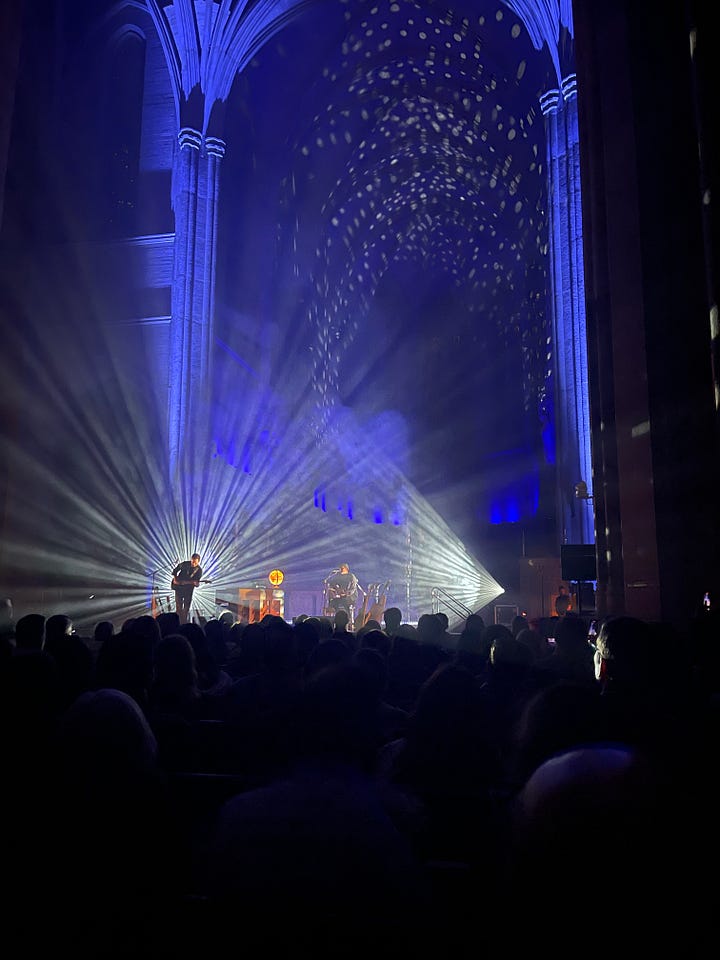
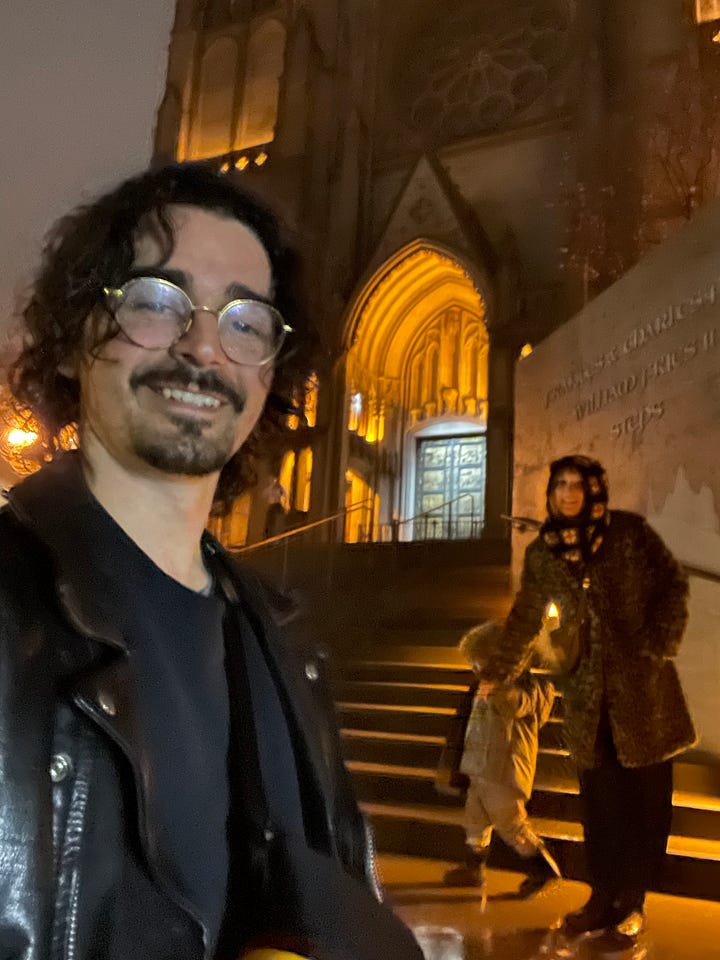
I had no idea how I was going to make it out west, but I knew I’d find a way. I told my husband we had options—I could fly out alone, we could all fly, or we could somehow road trip. But the thought of road-tripping to California in a Toyota RAV4 with a three-year-old sounded like a nightmare.
Still, I felt this deep pull to take my son to California—to show him the places that shaped me, that shaped Perry, that shaped our love story, which now held him at the center. I just didn’t know how to make it happen. Then, I had a hit of intuition—rent a camper van.
I started researching, but every rental I found was way out of our price range. I texted everyone I knew in the area, hoping someone had a lead on a van we could rent, but came up empty-handed. So I let it go. I stopped actively searching and let the idea simmer in the back of my mind.
And then, a new idea struck—pitch a collaboration. I’d use my storytelling and social media skills to position the trip as a dream experience made possible by the rental company. I went to pick out the perfect van and discovered that the owner wasn’t just renting vans—he built them. That was the real pitch. Not the company, but the van maker himself.
So I reached out with a collaboration deal—one that allowed him to make money while getting content that showcased his craftsmanship. And just like that, the impossible road trip started to become a reality.
He gave me the green light, and since January 21st, we’ve been living in his incredibly functional sprinter van—sleeping, cooking, parenting, and taking our dream trip back to California. And to think, it all started because I wanted to see Greg perform his kitchen songs.
I built the whole trip around that one desire. But isn’t that how all great things are built? You follow one pull, fulfill one longing, and it ripples outward, expanding into something even greater than you imagined. Not only did we get to see Greg perform in one of the most breathtaking venues in America—where I sat in the pew of a century-old church, tears streaming down my face as the music washed over me like a prayer—but every day since arriving in California, I’ve stood before the ocean, a dream in its own right.
I’ll write more about the road trip once we’re home, once I have time to look back and take it all in. But for now, I guess what I’m trying to say is this—follow your desires. The ones that light you up and pull at your soul. Listen to your intuition. Tap into your creativity. Stay open to receiving beyond what you think is possible. You never know how things are going to work out.
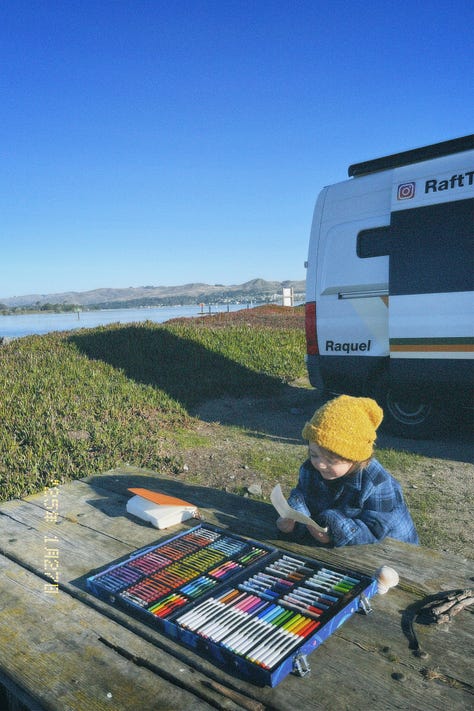
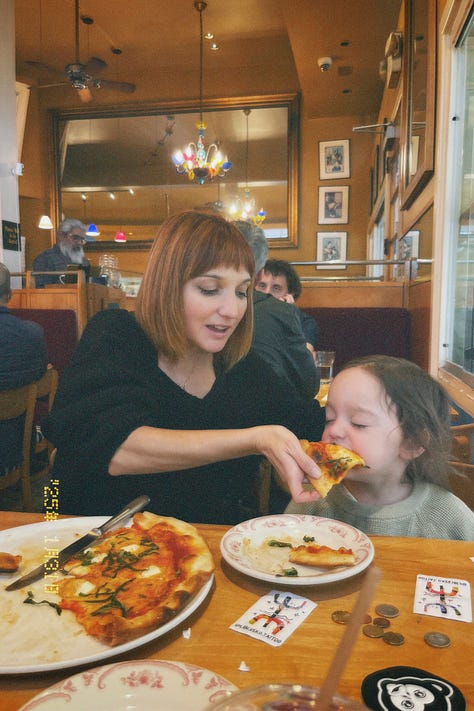
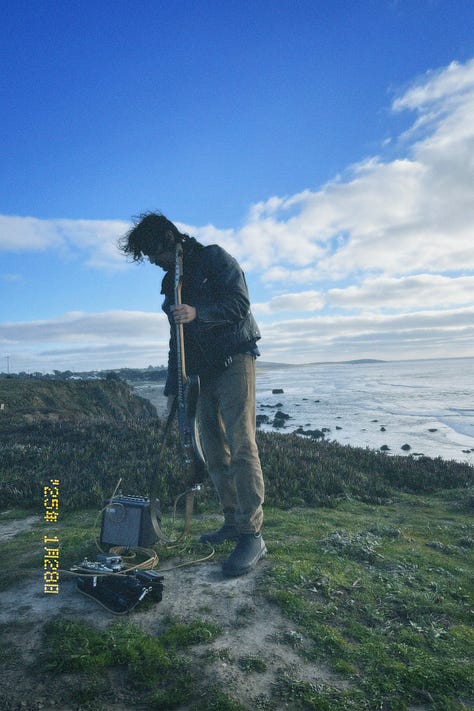

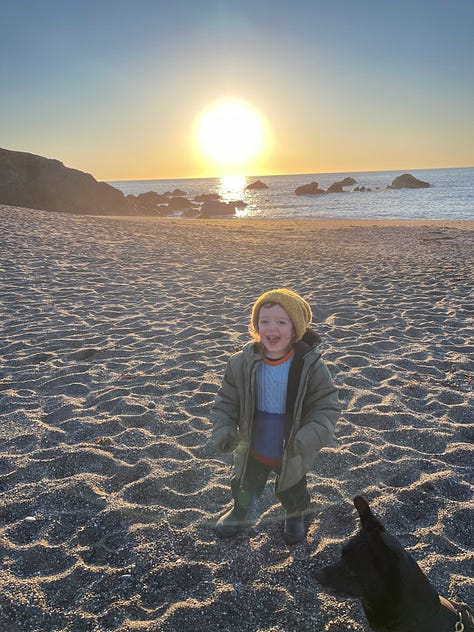
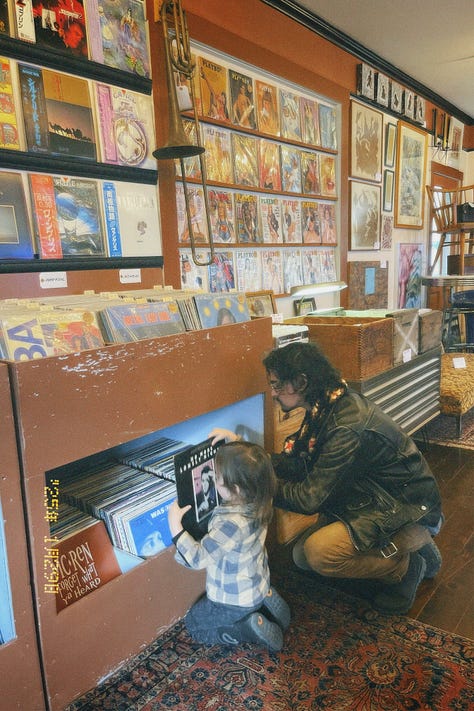

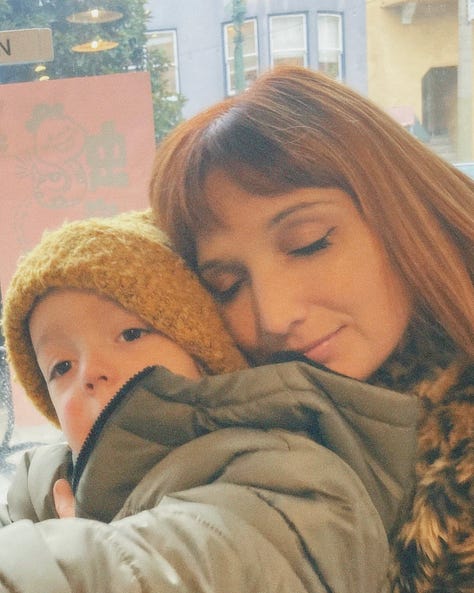

Publishing my memoir
I mentioned this in a previous newsletter, but I’m thrilled to share that I’ll be serializing my memoir here this year for my paid subscribers, releasing it one chapter at a time. The book is 56 chapters long, plus a short prologue, so some weeks will include multiple chapters. The first installment will drop on March 6.
This is a big moment for me. Letting go of this book feels both terrifying and exhilarating. It’s the story that taught me how to write, how to reconcile with my past, and how to confront the parts of myself that still ached. It’s where I found understanding, healing, and clarity. This memoir is deeply personal, and sharing it with you feels like an act of release—a way to finally set the story (and myself) free.
I’ll send out a newsletter dedicated entirely to the memoir, so you can know what to expect, why this story matters to me, and how it all came together. For now, I just want to thank you for being here—for reading, for supporting, and for creating a space where I feel safe enough to share this deeply vulnerable work.
I have so much more to share about January—the grief surrounding the California wildfires, returning to the Mojave where I grew up for the first time since my mom overdosed and woke up from a five-day coma, art, motherhood, manifestation, desire—but since this is already over 4,000 words, I’ll have to save it for another time.




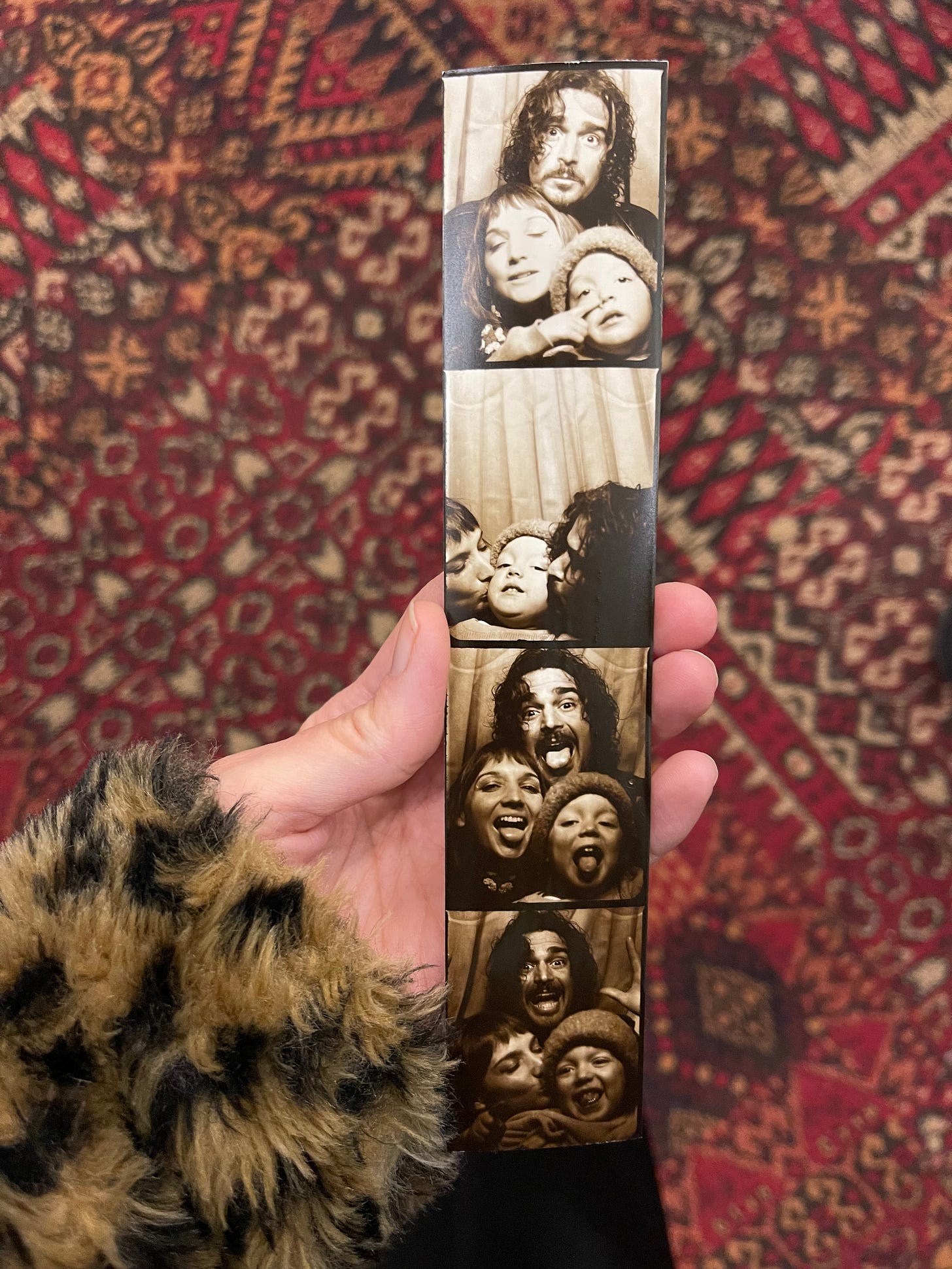
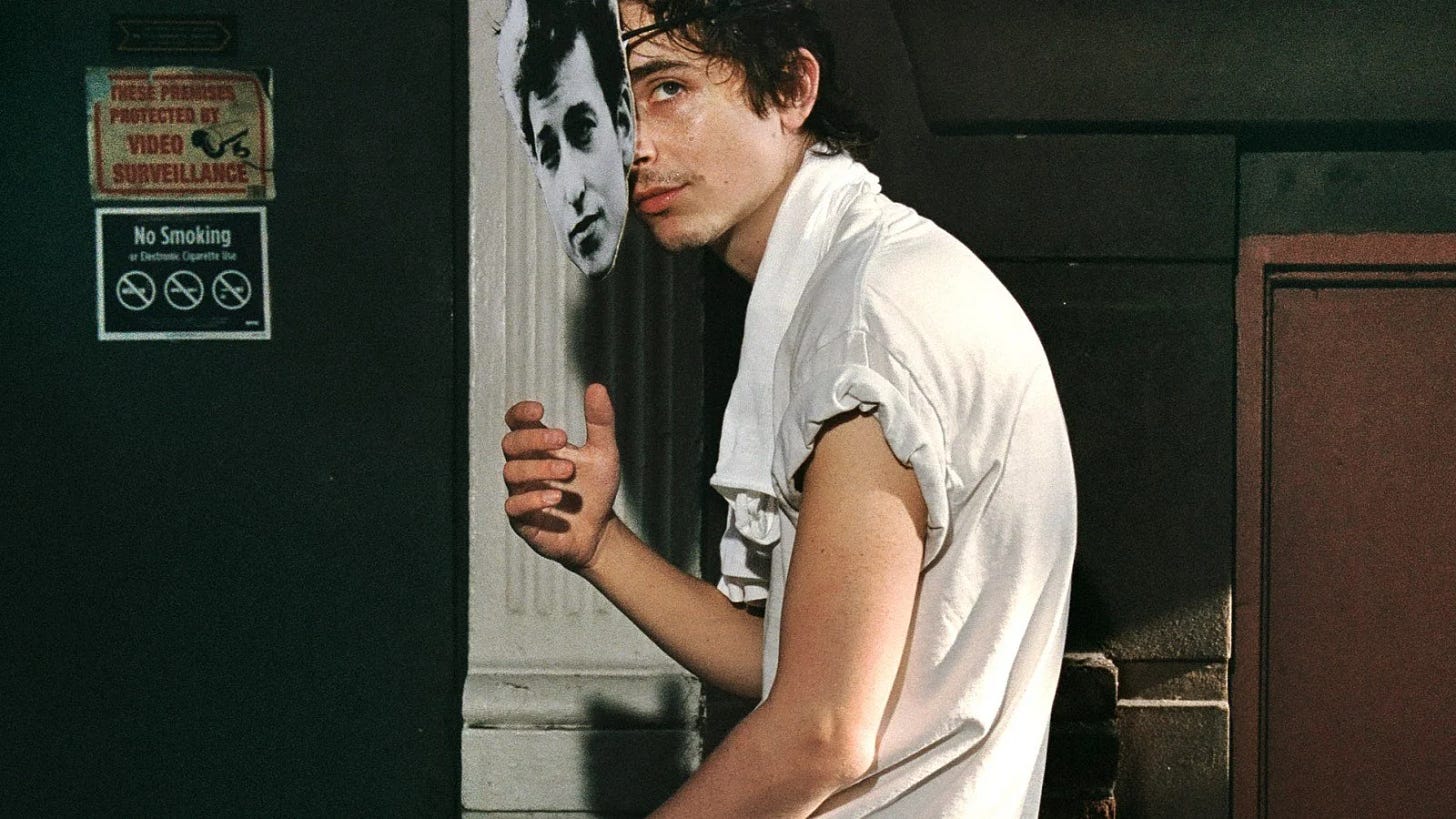
I love visiting the saltwater-crusted corners of your mountain life, and your return to the ocean felt beautiful, too. I could have underlined and dog-eared so many passages from this—I was going to refrain from quoting you back to you but I haven’t the strength. I know these feelings by name: “writing travel notes to remember until my hand ached and still having so much more to say… It was a deep nostalgia for my California youth and a present longing for a life I cannot yet see the shape of” — just two of too many sentences naming parts of this experience in a way I consider to be your contribution to the betterment of humanity. Thank you for that. And congratulations on the steps toward releasing your memoir, the world will be a better place for it, and I couldn’t be more happy for you 💙
Love seeing all of this for you Jessy 🤗. That show with Gregory sounds amazing!! Can’t wait to hear more about your trip and start reading your memoir!